Love Me Tonight (1932)
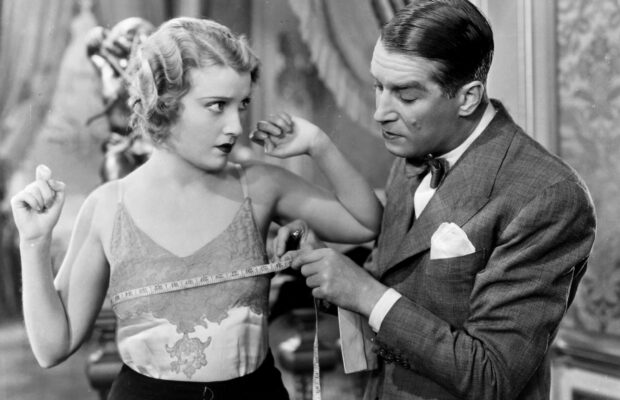
Toronto Film Society presented Love Me Tonight (1932) on Monday, July 23, 1984 in a double bill with If I Were King as part of the Season 37 Summer Series, Programme 3.
Production Company: Paramount. Producer: Rouben Mamoulian. Director: Rouben Mamoulian. Screenplay: Samuel Hoffenstein, Waldemar Young, George Marion, Jr., based on a play by Leopold Marchant and Paul Armont. Camera: Victor Milner. Art Director: Hans Dreier. Sounds: M.M. Paggie. Editor: Rouben Mamouian. Cutter: William Shay. Songs: Richard Rodgers and Lorenz Hart.
Cast: Jeanette MacDonald (Princess Jeanette), Maurice Chevalier (Maurice Courtelin), Charlie Ruggles (Vicomte Gilbert de Varene), Charles Butterworth (Count de Savignac), Myrna Loy (Countess Valentine), C. Aubrey Smith (The Duke), Elizabeth Patterson, Ethel Griffies, Blanche Frederici (The Three Aunts), Joseph Cawthorn (Doctor), Robert Greig (Major-Domo), Bert Roach (Emile), Ethel Wales (Dressmaker), Marion “Peanuts” Byron (Bakery Girl), Mary Doran (Mme. Dupont), Cecil Cunningham (Laundress), Tyler Brooke (Composer), Edgar Norton (Valet), Herbert Mundin (Groom), Rita Orwin (Chambermaid), Clarence Wilson (Shirtmaker), Gordon Westcott (Collector), George Davis (Pierre), Rolf Sedan (Taxi Driver), Tony Mirio (Hatmaker), William H. Turner (Bootmaker), George “Gabby” Hayes (Grocer), George Humbert (Chef).
In a departure from “biopics,” tonight’s first film on a royal theme is a fictional love story of a princess and a commoner, and one of the very best musical films of the Thirties. Witty and charming, with superb music by Rodgers and Hart, the only thing it lacks is colour to make it shine even brighter.
Rouben Mamoulian had already directed Applause (1929), City Streets (1931), and Doctor Jekyll and Mr Hyde (1932) when he was asked by Adolph Zukor of Paramount to direct Jeanette MacDonald and Maurice Chevalier in their next film. In serious financial difficulty, Paramount badly needed a hit from two of its major stars (with their big-salaried contracts). Mamoulian declined, suggesting Ernest Lubitsch was much better with that sort of project, but Lubitsch was not available. Zukor (as good an actor as many of his stars) shed a few tears while pleading, “We’re in dire straits at Paramount. You’re one of the family and we need you,” so Mamoulian accepted the assignment, for which we all can be thankful. The resulting film is perfectly summed up in Miles Kreuger’s programme notes for a 1963 New York revival:
“Like most films from big studios, Love Me Tonight is not altogether original in either story or treatment. Its roots can be found in the satiric work of Rene Clair, with his sweeping use of the camera and his outrageous sense of irony. Even more closely related are the tongue-in-cheek Ruritanian romances of Lubitsch, with their witty dialogue, lavish settings and costumes, and bubbling music. All these elements are strong in Love Me Tonight, but it transcends them, thanks almost totally to it director. It is simply the old story of the sleeping beauty, in fresh terms. The atmosphere is established in one of the most inventive openings in film history. We are introduce to lovely shots of Paris waking in the early morning, and a symphony of sounds, rising to a thunderous and triumphant climax, and punctuated with a perfect visual version of a grammarian’s period: a solitary hat hanging on a wall. It is Maurice’s hat; and when he dons it, he instantly becomes the embodiment of all the excitement that is Paris. Though only a tailor, he is the perfect lover to awaken the world-weary princess.
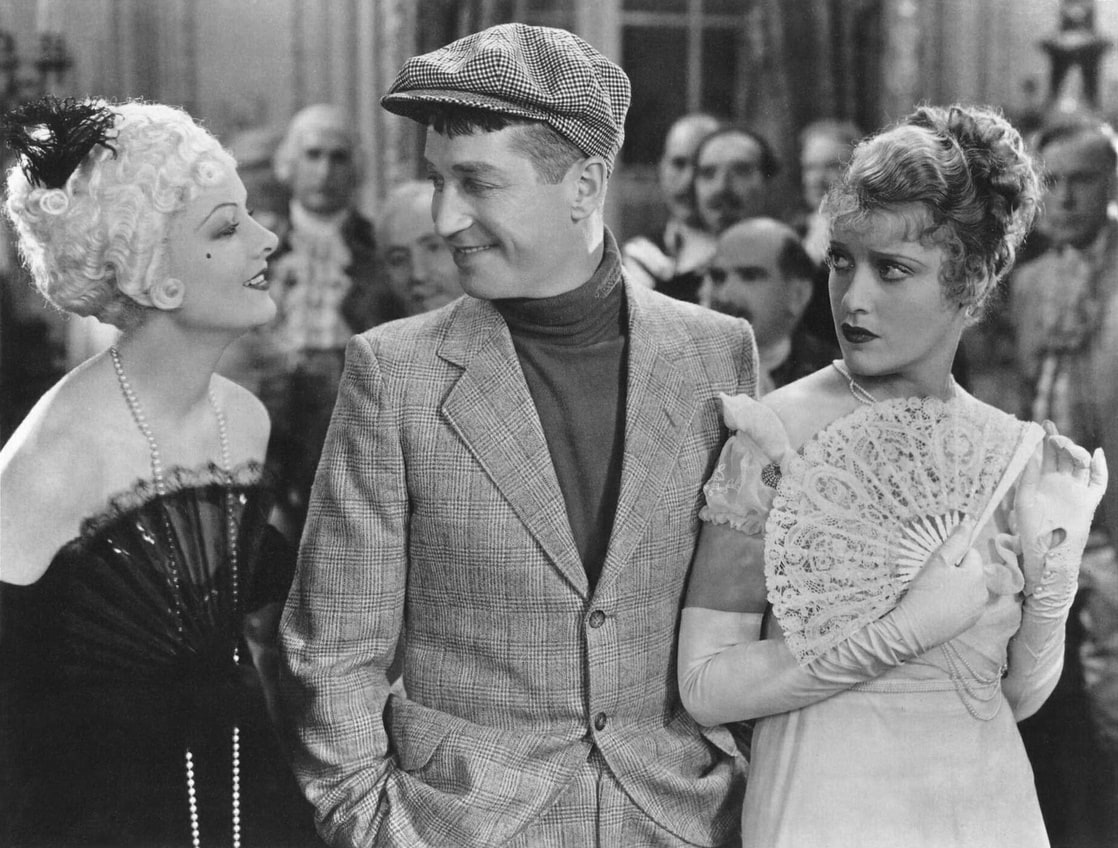
“Mamoulian ingeniously utilizes musical techniques to endow the ultimate meeting of the lovers with a mystical inevitability by having them meet in song, long before they meet face to face, Maurice’s song, ‘Isn’t It Romantic’ travels from his little tailor’s shop, through a customer, to a cab-driver, to a composer, who sings it on a train and is overheard by soldiers who reprise it as they march past a gypsy, who in turn serenades the princess, who ultimately makes the song her own. This use of a song to further the plot, interrelate characters and places, and set a mood, was a daring innovation. Rodgers recently said it was one of the first occasions in which a musical number had to be shot in more than one set. And, considering that the track was not pre-recorded, the matching of the transitions had to be managed with split-second timing. Another lovely Mamoulian touch is the pastoral ballet: for how else can one describe the visual beauty of the stag hunt, and the effortlessness with which the camera speeds up and slows down the horses to enhance the mood. Even the bounding stag hops lightly to the metre of the music. In the denouement Mamoulian makes the most of his newly-discovered musical-comedy techniques; as the masters, guests and servants in a chateau react to being duped by a tailor disguised as a baron, the camera is free to dart from place to place to evoke a total image of the situation.
“Love Me Tonight has a perfect balance of sex and slapstick comedy, of romantic and humorous songs, of opulence and of charm. And just as it drew from earlier works, it too inspired moments in many other films. Jeanette’s singing of ‘Lover’ to her horse turns up again in ‘The Donkey Serenade’ in her own Firefly. The deathly silent drawing-room where guests play bridge as butlers tiptoe delicately about reappears in Astaire-Rogers’ Top Hat (1935) as the reading-room of a conservative men’s club. The entire opening sequence of dawn over Paris with the mounting sound effects . . . turned up virtually intact in Preminger’s overstuffed screen version of Porgy and Bess (1960), for which Andre Previn was quick to accept the credit for having devised the idea (Mamoulian, incidentally, was originally slated to direct). The brief shot of the towering butlers sneering down at the tailor appears again in Citizen Kane (1941).
“Love Me Tonight hints at the kind of rhythmic dialogue which Rodgers and Hart were later to use extensively in the Jolson-Milestone film Hallelujah I’m a Bum (1933). It is a style in which the characters almost chant their lines, as if about to sing. It is designed to break down the barrier between speech and song, which often makes the entrance of a song seem abrupt and self-conscious. Although few (original) Rodgers and Hart films have left behind enduring song hits, Love Me Tonight has given us three, in addition to a beautiful, though sadly neglected, title song. If the film had given us nothing else we would be grateful; that Mamoulian has made it a masterwork of its kind, we must be more than grateful.”
Notes by Barry Chapman

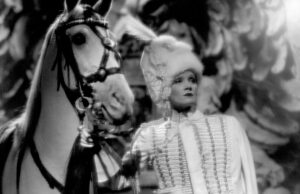
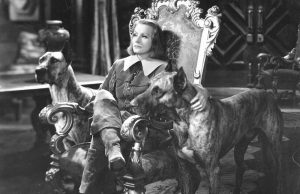
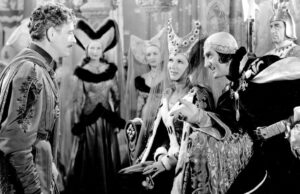






Leave a Reply